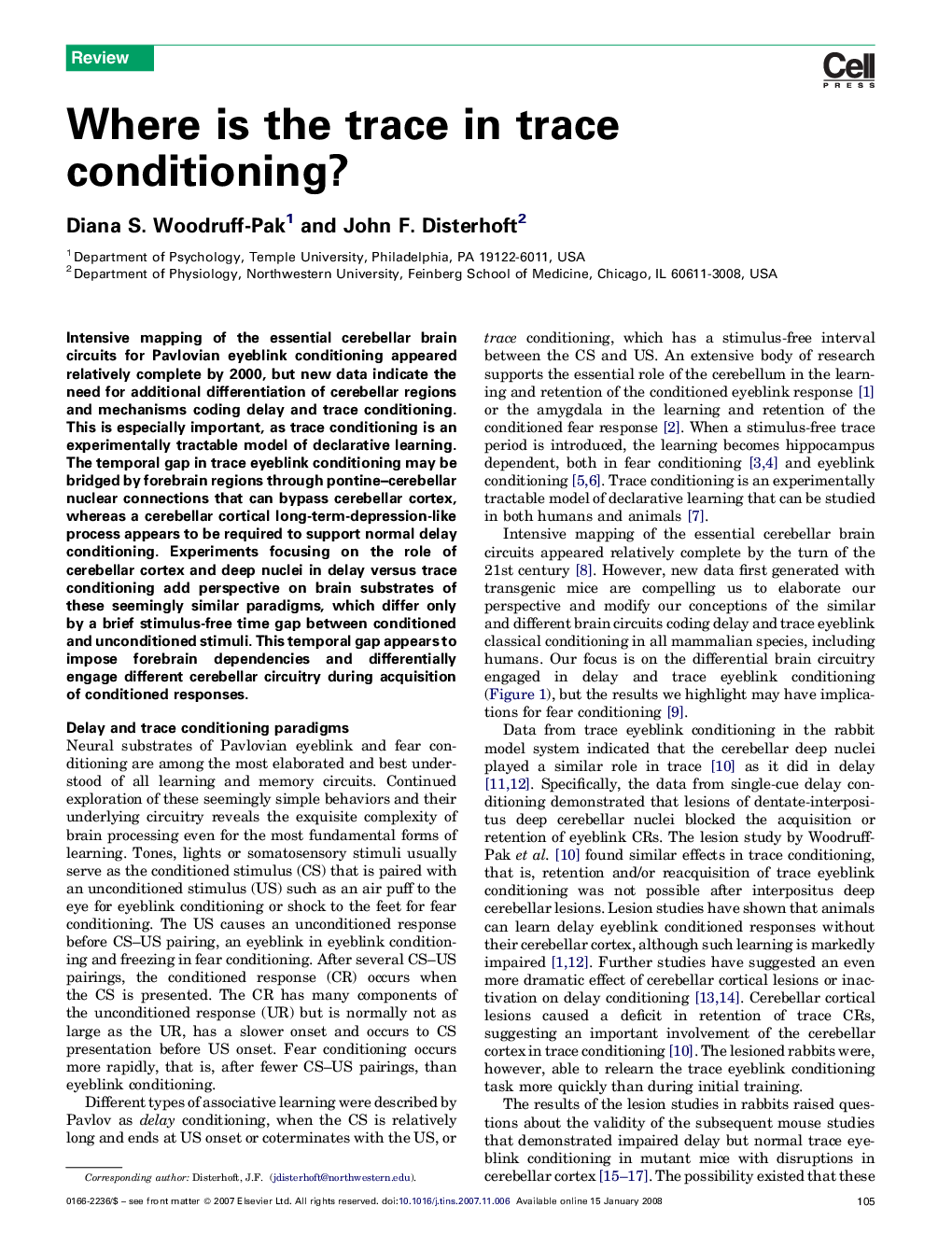| Article ID | Journal | Published Year | Pages | File Type |
|---|---|---|---|---|
| 4354717 | Trends in Neurosciences | 2008 | 8 Pages |
Intensive mapping of the essential cerebellar brain circuits for Pavlovian eyeblink conditioning appeared relatively complete by 2000, but new data indicate the need for additional differentiation of cerebellar regions and mechanisms coding delay and trace conditioning. This is especially important, as trace conditioning is an experimentally tractable model of declarative learning. The temporal gap in trace eyeblink conditioning may be bridged by forebrain regions through pontine–cerebellar nuclear connections that can bypass cerebellar cortex, whereas a cerebellar cortical long-term-depression-like process appears to be required to support normal delay conditioning. Experiments focusing on the role of cerebellar cortex and deep nuclei in delay versus trace conditioning add perspective on brain substrates of these seemingly similar paradigms, which differ only by a brief stimulus-free time gap between conditioned and unconditioned stimuli. This temporal gap appears to impose forebrain dependencies and differentially engage different cerebellar circuitry during acquisition of conditioned responses.
